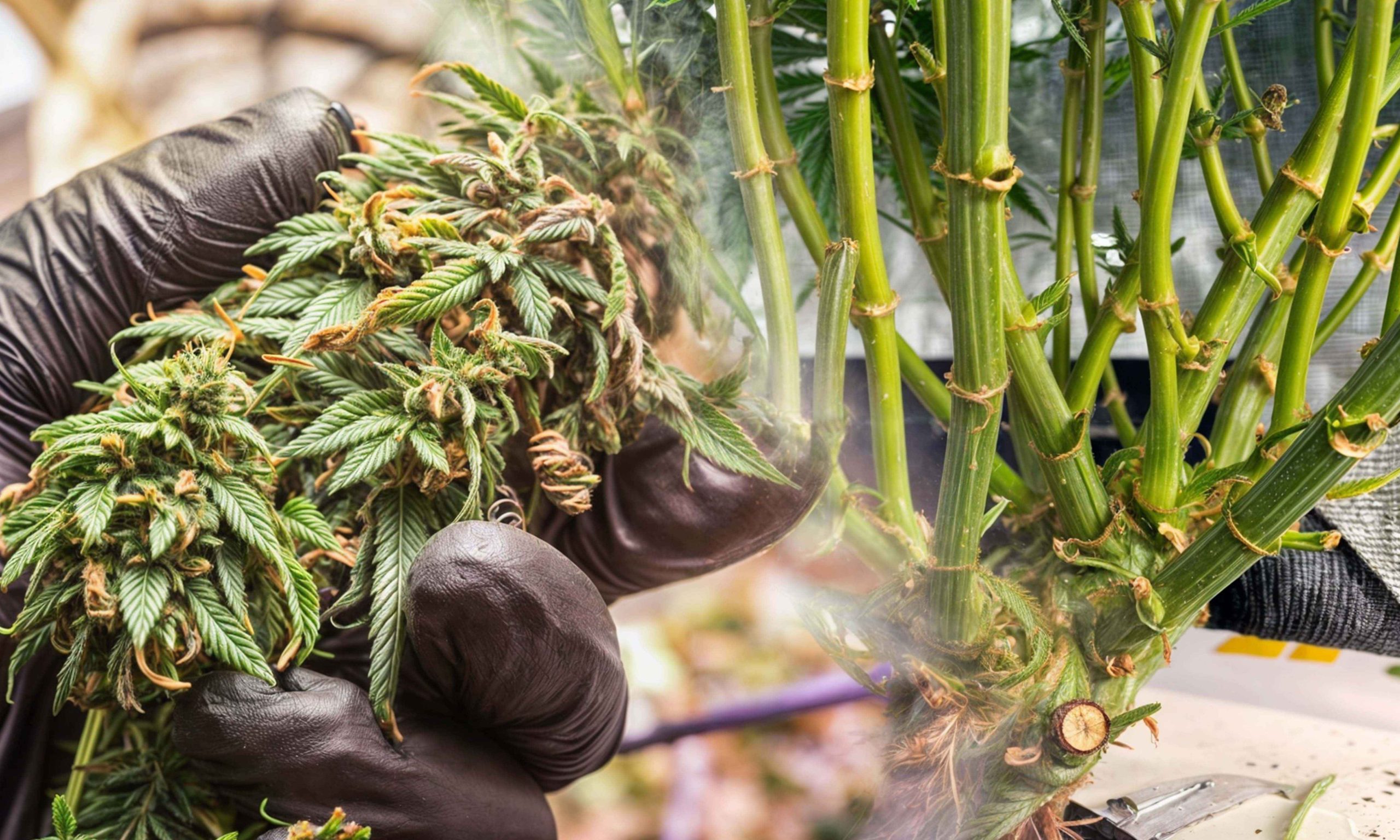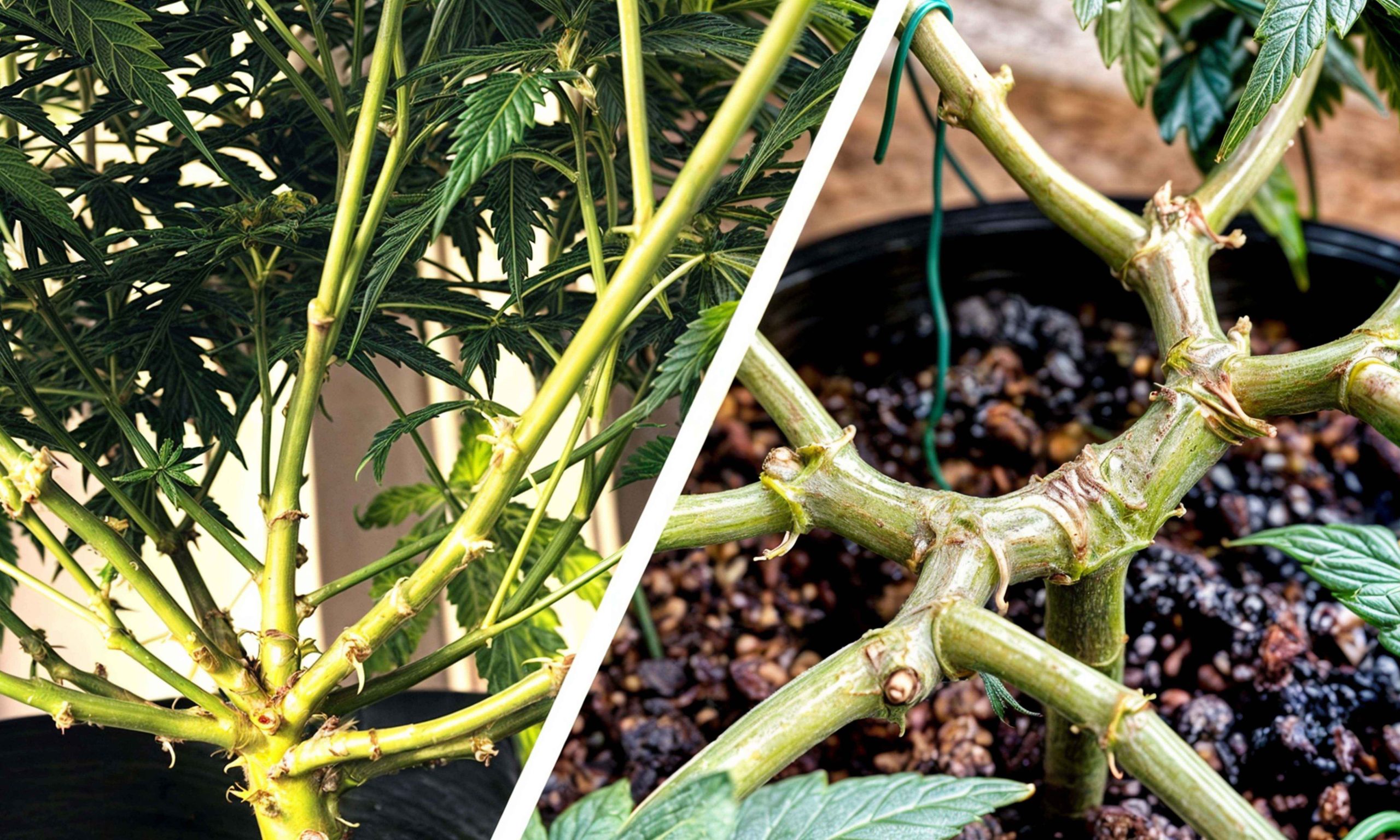Are you passionate about growing cannabis and want bigger yields without costly gear or complicated techniques? If yes, you should consider monster cropping. It’s a game-changing method gaining popularity among cannabis growers for its simplicity and effectiveness.
So, what exactly is monster cropping? It is a method of taking clones from flowering plants, rather than from vegetative plants as traditionally done. This technique involves selecting a healthy and vigorous flowering plant and taking cuttings from it to create clones. This process might sound unconventional, but it has been proven to result in larger yields and more potent buds.
What Is Monster Cropping?
Monster Cropping, also known as “flowering clones,” is a cannabis cultivation technique that involves taking clones from flowering plants. This method allows growers to preserve the genetics of a particular strain while also boosting yields. By cloning during flowering, plants experience re-vegetation, leading to fuller growth and more buds. Monster cropping is beneficial for space efficiency, boosting potency, and flavor. It’s a valuable technique for growers aiming to enhance yields and harvest quality.
How Does Monster Cropping Work?
Monster cropping entails taking cuttings from cannabis plants during their flowering phase, usually about 3-4 weeks into flowering. These cuttings are rooted and returned to the vegetative stage under continuous light for 18-24 hours. Once they’ve regrown, they serve as mother plants for further cloning and future harvests.
Monster Cropping vs Super Cropping
Monster cropping and super cropping are both techniques used by cannabis growers to increase yields and efficiency, but they serve different purposes.
Monster cropping involves taking clones from flowering plants and reverting them back to the vegetative stage. This technique can result in bushier plants with multiple main colas, leading to increased yields. It’s particularly useful for strains that respond well to stress and for growers looking to maximize their harvest without increasing the number of plants.
On the other hand, super cropping involves strategically damaging the plant’s stems to encourage lateral growth and improve light penetration. This technique doesn’t involve cloning flowering plants or reverting plants to the vegetative stage but rather manipulating the existing plant structure. Super cropping can help control plant height, increase bud sites, and ultimately enhance yields.
Overall, while monster cropping focuses on cloning and reverting plants, super cropping aims to enhance the structure and growth of the existing plant. Both techniques offer benefits to cannabis growers seeking higher yields and efficiency.
Pros and Cons of Monster Cropping Cannabis
Pros of Monster Cropping:
- Increased Yields
Monster cropping allows growers to generate new plants from flowering ones, maximizing the number of plants in the garden. With more plants in the vegetative stage, growers can potentially achieve higher yields during the next flowering cycle. - Genetic Preservation
Growers can keep the genetic qualities of outstanding plants by cloning from those in flower. This helps maintain traits like potency, flavors, or strong growth. It guarantees consistent future harvests and lets growers stick with preferred strains. - Faster Turnaround Time
Since clones taken from flowering plants are already well-developed, they tend to root quickly and transition back to the vegetative stage faster than traditional clones. This can shorten the overall cultivation cycle, allowing for more frequent harvests. - Stress Testing
Monster cropping involves subjecting plants to stress by taking clones from flowering branches. This stress can trigger increased production of secondary metabolites, potentially leading to higher levels of cannabinoids and terpenes in the resulting plants. - Cost-Efficiency
Utilizing monster cropping can save growers money on seeds or mother plants since they can generate new plants from existing ones. This can be particularly beneficial for commercial growers looking to scale up their operations without significant investments in genetics.
Cons of Monster Cropping:
- Delayed Recovery
Clones taken from flowering plants might get a shock as they switch back to the vegetative stage, causing them to grow slowly at first. It takes time for these clones to bounce back and start growing vigorously again. - Risk of Hermaphroditism
Stress-induced by monster cropping can increase the risk of hermaphroditism in plants, especially if they are genetically predisposed to it. Hermaphrodite plants can pollinate themselves or neighboring plants, leading to seeded buds and reduced overall quality. - Space Requirements
Monster cropping requires additional space to accommodate the flowering plants from which clones are taken, as well as the clones themselves during the revegetation process. Growers with limited space may find it challenging to implement this technique effectively. - Skill and Experience Required
Successfully monster cropping cannabis requires skill and experience in cloning techniques, as well as an understanding of plant physiology and stress management. Novice growers may struggle to achieve desirable results and could encounter setbacks along the way. - Potential for Inconsistent Result
Monster cropping has the potential to boost yields and potency, but outcomes vary based on genetics, environment, and grower expertise. Some plants thrive with this method, while others may show slow growth or problems.
Implementing Monster Cropping in Your Grow Space
Step 1: Choose Your Mother Plant
- Select a healthy and vigorous mother plant that is currently in the flowering stage. Look for plants with desirable traits such as strong growth, high potency, and abundant resin production.
Step 2: Take Cuttings
- Prepare your cutting tools by sterilizing them to prevent the spread of disease.
- Identify suitable branches on your flowering plant and take cuttings using sharp scissors or a razor blade. Aim to take cuttings from branches that are at least four weeks into the flowering stage.
- Each cutting should include a few nodes and a portion of the stem. Trim away any excess foliage from the lower nodes to encourage root development.
Step 3: Prepare Clones for Rooting
Dip the cut ends of your clones into a rooting hormone to promote root growth.
Plant the clones in a growing medium such as rock wool cubes or peat pellets. Make sure to keep the growing medium moist but not waterlogged to prevent rotting.
Step 4: Provide Ideal Growing Conditions
- Place your clones under a humidity dome or in a propagator to maintain high humidity levels, which will encourage root development.
- Position your clones under a grow light with a spectrum that is suitable for rooting and vegetative growth. Aim for a light cycle of 18-24 hours of light per day to promote vigorous growth.
Step 5: Monitor and Care for Your Clones
- Keep a close eye on your clones and make sure to water them regularly to prevent wilting.
- Monitor humidity levels and adjust as needed to maintain optimal conditions for rooting.
- Once the roots have grown, slowly adjust the clones to lower humidity and longer light periods. This helps them get ready for transplanting into bigger pots or outdoors.
By using these easy steps, you can do monster cropping and boost your cannabis yields effortlessly. Try it out to see how it can help your growing setup and improve your harvests!
Conclusion
Monster cropping offers great rewards for dedicated growers. By taking cuttings from flowering plants, growers can create new plants with the same genetic potential as the mother plant. This can lead to increased yields, potency, and efficiency in the cultivation process. Though it demands some trial and error, many growers have succeeded with this method. Whether you’re new or seasoned, consider trying monster cropping for improved harvests.
Frequently Asked Questions
1. What is monster cropping in cannabis cultivation?
Monster cropping is a method in growing cannabis where clones are taken from plants while they are flowering, not during the usual vegetative stage. This takes advantage of how flowering plants grow, resulting in clones that are fuller and produce more buds.
2. How does monster cropping differ from traditional cloning methods?
Traditional cloning methods involve taking cuttings from vegetative plants, while monster cropping involves taking cuttings from plants that are in the flowering stage. Monstercropping takes advantage of the hormonal changes that occur during flowering, resulting in clones that exhibit vigorous growth and increased branching.
3. How late into flowering can you clone?
Cloning can be done late into flowering, ideally up to 3 weeks before harvest. However, success rates may diminish as the plant undergoes advanced stages of flowering. It’s best to clone earlier in the flowering stage for optimal results and to ensure adequate time for root development before harvest.
4. Can any cannabis strain be monster cropped?
While monster cropping works for many cannabis varieties, some strains respond more than others. Strains with strong growth and a positive reaction to pruning and training techniques excel with monster cropping.
5. Can I monster crop multiple times from the same plant?
Yes, you can monster crop from the same plant multiple times, yet the chances of success decrease with each attempt. It’s crucial to keep an eye on the mother plant’s health and strength to ensure it’s suitable for cloning. Providing the plant with good care and nutrients can increase success rates when trying monster cropping again.






